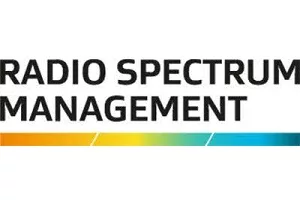Radio Spectrum Management (RSM) in New Zealand is currently evaluating the potential utilisation of the 24 – 30 GHz radio spectrum range. Key allocation decisions have been reached, and efforts are in progress to open this spectrum to the market by 2026.
RSM has made high-level allocation decisions for the use of this spectrum, with a focus on providing clarity to the mobile and satellite industries for their long-term planning.
The high-level allocation
The cabinet has made a high-level allocation decision for the radio spectrum range of 24 – 30 GHz. This decision aims to provide certainty to the mobile and satellite industries regarding the portions of the spectrum available for their use in the long term.
Allocation in the 26 GHz Band
In the 26 GHz band, the 24.25 – 27.5 GHz spectrum range will be primarily allocated for mobile use, with the potential inclusion of some satellite services in specific areas under technical conditions.
Allocation in the 28 GHz Band
In the 28 GHz band, the 27.5 – 28.35 GHz spectrum range will follow a sharing model between mobile and satellite services. The 28.35 – 29.5 GHz spectrum range will be primarily allocated for satellite services, with the option to include some mobile use under technical conditions.
Next steps for making this spectrum available in 2026
RSM is working towards making this spectrum available for long-term use by around May 2026. This involves a work programme including technical work, industry consultation, engagement with stakeholders (including the Interim Maori Spectrum Commission), regulatory design, and further decision-making processes.
Guidance for current and prospective users in these bands
Satellite service providers who hold current licenses will be allowed to apply for extensions until May 2026, so they may continue providing services to New Zealand for the interim. By May 2026 future decisions are expected on the satellite licensing approach for long term use. The details of these extensions will be discussed directly with the affected licensees prior to the current license’s expiry.
Any additional or new interim licenses for satellite services will be considered on a case-by-case basis in line with the existing rules (see PIB 38 and PIB 58). Strict criteria will apply to ensure that decisions are compatible with the high-level allocation decision and do not prejudge future decisions.
Any requests for other usage (e.g. 5G fixed term licences) will be considered on a case by case basis in line with the existing rules (see PIB 38 and PIB 58). Strict criteria will apply to ensure that decisions are compatible with the high-level allocation decision and do not prejudge future decisions.
The 24 – 30 GHz spectrum range is aimed to be made available for long term use in around May 2026. Those current satellite operators who hold licenses will be allowed to apply for extensions. MBIE will also be considering any new or additional licenses on a case-by-case basis in line with the existing rules and strict criteria will apply to ensure that this is compatible with the high-level allocation decision and does not prejudge future decisions.
This decision comes after a consultation in 2021, and RSM would like to extend thanks to those who provided feedback.
More information can be found here.
Comment on this article below or via Twitter: @VanillaPlus OR @jcvplus






